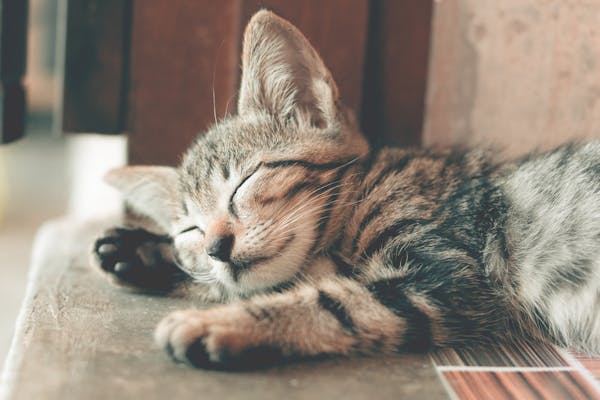If you’re a cat owner, you’ve probably seen your feline friend rhythmically pressing their paws into soft surfaces like blankets, pillows, or even your lap. This adorable behavior is known as “kneading.” While it might seem like a quirky habit, kneading actually has deep-rooted biological and emotional reasons. Let’s explore the science behind why cats knead and what it reveals about their instincts and emotions.
1. Instinct from Kittenhood
One of the primary reasons cats knead is due to an instinctual behavior developed during kittenhood. Kittens knead their mother’s belly while nursing to stimulate milk flow. This motion helps them get more nourishment, and as a result, the action becomes associated with comfort, warmth, and security. Even though adult cats no longer nurse, the kneading behavior often remains as a comforting, instinctual action.
2. Marking Territory
Cats have scent glands located in their paws, and when they knead, they release pheromones. This is a way for them to mark their territory. By kneading objects—or sometimes even their human companions—cats are claiming them as their own. In essence, when your cat kneads you, they’re telling other animals, “This human is mine.”
3. Comfort and Relaxation
Kneading is also thought to be a self-soothing behavior. Cats often knead when they’re content, relaxed, or preparing to settle down for a nap. The repetitive motion can be calming, much like how humans might fidget or stroke something soft when trying to relax. In some cases, cats even purr while kneading, further indicating their satisfaction and comfort.
4. Stretching and Exercise
Cats are natural athletes, and kneading may also serve a practical function as a form of stretching. When cats push their paws into a soft surface, they extend their claws and muscles, which helps to keep them flexible and maintain muscle tone. It’s a bit like how humans stretch their muscles after sitting for a while.
5. Nesting Behavior
In the wild, feral cats and their ancestors used to knead tall grasses or soft earth to create a comfortable spot for sleeping or giving birth. This nesting behavior helps create a cozy and safe place to rest. Though domesticated cats no longer need to create a nest, the instinct to knead before settling down may still linger.
6. Emotional Bonding
Kneading can also be a sign of affection and bonding. When your cat kneads you, it’s often a display of love and trust. They associate the behavior with feelings of safety and contentment, as they did when they were nursing from their mother. In a way, your lap becomes a symbol of comfort for them, and kneading is their way of expressing that emotional connection.
7. A Throwback to Wild Ancestors
Kneading may also have evolutionary roots. Big cats, like lions and tigers, have been observed kneading the ground in their natural habitats. This behavior might have helped them soften the surface for resting or signal ownership of a specific area. Though domesticated cats don’t need to prepare a resting spot in the same way, the behavior may still be a remnant of their wild ancestry.
Should You Stop Your Cat from Kneading?
While kneading is a completely natural and harmless behavior, it can sometimes be uncomfortable, especially if your cat’s claws are sharp. To prevent any scratching or discomfort, make sure to regularly trim your cat’s nails or place a soft blanket on your lap when they start to knead. Discouraging kneading entirely isn’t necessary, as it’s an important part of their emotional expression and well-being.
In some cases, cats may knead excessively due to stress or anxiety, in which case it’s worth investigating whether something in their environment is causing distress. In these situations, providing more enrichment, playtime, or comforting spaces might help reduce stress.
Conclusion
Kneading is more than just an adorable quirk; it’s a behavior rooted in biology, instinct, and emotional connection. From kittenhood memories of nursing to marking territory with pheromones, cats knead for a variety of reasons. This rhythmic pawing can be a sign of trust, comfort, and relaxation, as well as a way for your feline friend to show affection. So, the next time your cat starts kneading, take it as a compliment—they’re telling you they feel safe and loved!

